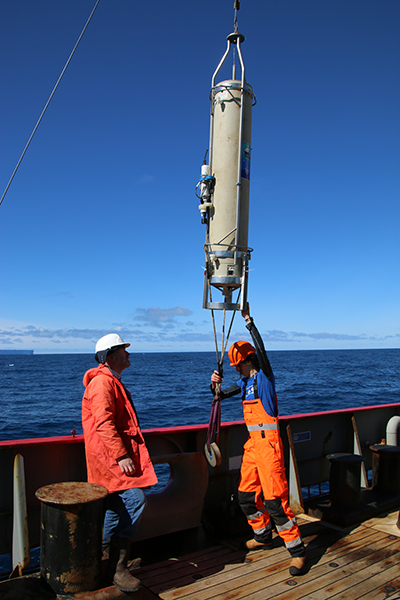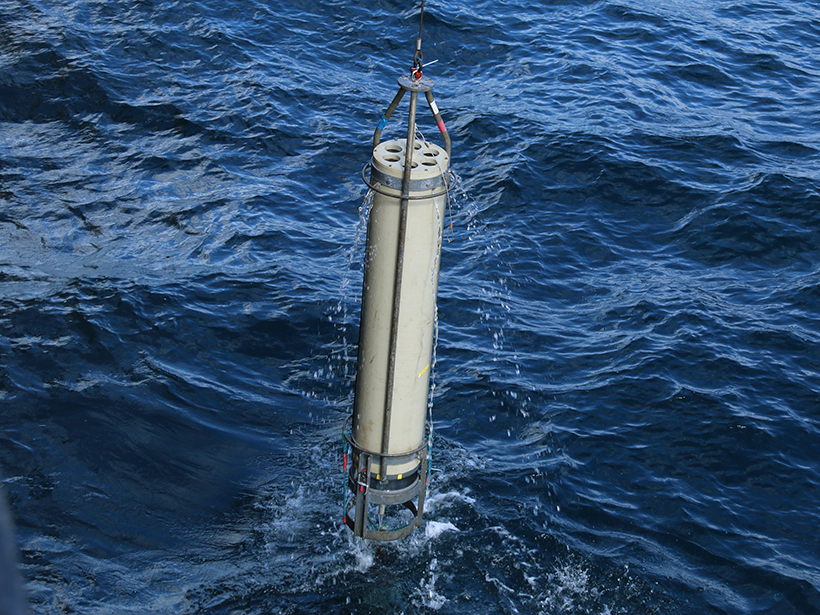Source: Global Biogeochemical Cycles
Earth’s oceans play a major role in limiting the concentration of carbon dioxide in the atmosphere. Carbon dioxide dissolves in surface waters, where marine organisms metabolize it and incorporate it into their own biology. New research by Baker et al. challenges prevailing views on the ultimate fate of this organic matter.
After the death of a marine organism, other organisms may metabolize and convert that organic matter back into carbon dioxide that can reenter the atmosphere. However, before it can be metabolized, some organic matter sinks through the ocean in the form of particulate organic carbon (POC). Once it reaches the deep ocean, this carbon can be stored out of reach of the atmosphere for hundreds or thousands of years.
A long-standing view holds that most POC that sinks to the deep ocean descends rapidly in large clusters. However, previous studies have hinted that smaller, slow-sinking POC particles may play a bigger role than previously thought.

To better understand this role, the team took 144 measurements of slow-sinking POC throughout the Atlantic Ocean during eight research cruises. For each measurement, they lowered a marine snow catcher beneath the upper layer of the ocean to capture a water sample. The instrument was then left upright on deck for 2 hours, allowing the POC particles and clusters to be separated, depending on how fast they sank.
By measuring POC in the different sinking fractions for each water sample, the team determined that median slow-sinking POC concentrations were 75 times higher than median fast-sinking POC concentrations. They also calculated that the amount of slow-sinking POC sampled below the surface was usually greater than the amount of fast-sinking POC.
Data collected in the Southern Ocean indicated that the contribution of slow-sinking POC to total flux—the amount that descends through a given area over a given time—increases with depth compared to the flux of fast-sinking POC. The researchers hypothesize that this is due to fragmentation of fast-sinking POC, which generates smaller, slow-sinking POC.
The authors found that existing biogeochemical models that do not reproduce this hypothesized fragmentation behavior were unable to simulate the observations. This suggests that existing models probably overestimate the amount of POC that is stored long term in the deep ocean, and the authors suggest that improved biogeochemical representations are needed in these models. (Global Biogeochemical Cycles, https://doi.org/10.1002/2017GB005638, 2017)
—Sarah Stanley, Freelance Writer
Citation:
Stanley, S. (2017), New evidence challenges prevailing views on marine carbon flux, Eos, 98, https://doi.org/10.1029/2017EO079503. Published on 23 August 2017.
Text © 2017. The authors. CC BY-NC-ND 3.0
Except where otherwise noted, images are subject to copyright. Any reuse without express permission from the copyright owner is prohibited.

